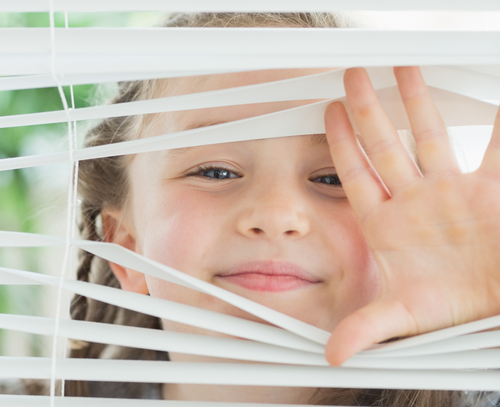
Once you get into your new place, you want to paint, upgrade fixtures and add window coverings. While at it, consider extras that improve your bottom line. Some simple ideas that lower electricity and gas bills put your personal decorative stamp on your home at the same time:
By far, you lose the most energy lost in your home through the combination of walls (35%) and roof (25%). Both areas benefit from additional insulation. The next place you lose energy, via the windows and doors— those beautiful openings that let in sunshine—results in another 25% of your energy loss.
Eventually, you want to upgrade your insulation if you lose energy through the walls and roof, and lower U-value windows and frames if your windows are older, but in the interim—especially to stretch your budget after buying your home—you can save on energy bills and decorate at the same time by careful selection of window coverings.
Thermal window coverings
We think of “thermal” as keeping heat in (as in waffle-weave thermal underwear), but thermal window coverings keep the cold air out in the winter and the heat out in the summer. No matter what the season, they allow you better control of your indoor temperature and therefore a reduction in your energy expenditure.
- Cellular shades: These “honeycomb” shades create trapped pockets of air between two or more layers. The more layers of cells, the more energy efficient these blinds are. They create an “airspace” barrier between your window and the interior room.
- Thermal interior blinds (mini-blinds, plantation-style blinds, etc.) have varying degrees of thermal protection. The advantage to slatted blinds is more control over the light that enters the room, and the ability to direct the light upwards or downwards to diffuse its strength and glare. In addition, the curve of the slat allows moving air to become trapped in the interior of the curve or flow over the exterior of the curve so you can adjust how much air comes into the room from an open window. More useful information on blinds found in the website of SONA.
- Thermal exterior blinds: typically made of aluminum, bamboo, wood, steel or vinyl, exterior blinds lower or raise onto rods and channels and are mounted above the window. While these blinds provide shade and privacy, they, some homeowners associations to not allow their installation as they change the appearance of the home’s exterior.
- Draperies and curtains: by far the easiest to install, thermal draperies and curtains reduce heat loss in the winter and keep the heat out in the summer. They provide “blackout” conditions for improving sleep or for use in media rooms. With various levels of thermal curtains on the market, the greatest gains keeping heat out come from those with white acrylic backings—the more “passes” (layers) of acrylic, the thicker and more efficient the fabric. Additionally, the thicker the lining, the more they block light, making these ideal for bedrooms.
To keep cold out in the winter, layers control temperature better because heated air becomes trapped between the layers. Installing a lining between your decorative curtain and the window, or attaching a thermal lining to the back of your curtain improves the R-value of your window covering.
Other options to adjust how heat and light enter your home include reflective window films and mesh window screens, folding arm awnings Melbourne and roof overhangs. You may consider getting awnings from a legit residential and commercial awnings supplier.
Ask your real estate professional to help you determine which changes (exterior or interior) to make for improving your energy efficiency in your new home.






 Catch Our Feed
Catch Our Feed Subscribe via Email
Subscribe via Email Follow Our Tweets
Follow Our Tweets Friend Us On Facebook
Friend Us On Facebook Watch Us On Youtube
Watch Us On Youtube